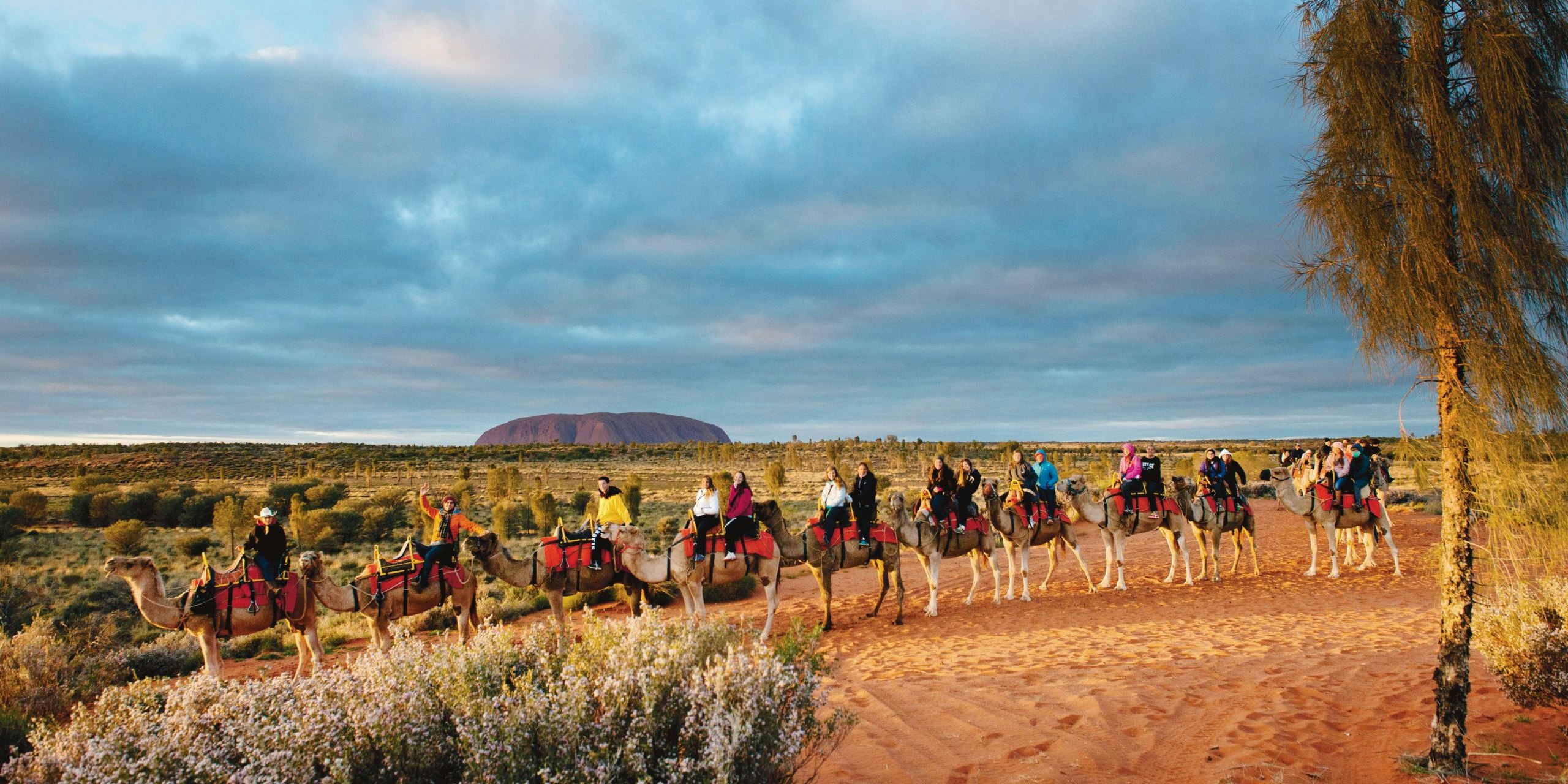- Author:
- Mary Rogelstad
- Published:
- April 29, 2022
- Favorites:
- Tagged In:
- Australia
Why Are There Camels in Australia?
Camels were brought to Australia in 1840 to work in the arid regions of Australia.
—–
It’s easy to picture a camel walking through a land like the Sahara Desert in northern Africa. Camels are made for such elements. Among the more dashing features that make desert living possible for these magical creatures include:
Luxurious eyelashes and eyelids – Camels have three sets of eyelids with two of them having lashes. These protect them from desert elements like blowing sand and brutal sunlight.

Talented nostrils – Camels can close their nostrils also because of sand.
Hump storage – Camels store fat in their hump, allowing them to go long periods of time without food. Concentrating fat in their humps also helps them regulate their body temperature – absorbing heat during the day that can be distributed at night.
Oval-shaped cells – Camels can go nearly a week without water because they have oval-shaped cells that are elastic and allow them to drink large quantities of water when it is available.
Thick pads of skin – The skin on their chest and knees allow camels to sit comfortably on very hot sand.
So it seems that animals that are practically designed for the African desert would thrive in a rough and tumble place like the Australian Outback – and they have to some extent. But that is only because of the misdirection of men.
Why are there camels in Australia? Because men brought them there – and that has led to a sad tale of what can go wrong in the environment when people make mistakes.
The Fate of Harry
In the mid-1800s British explorer John Ainsworth Horrocks came up with a plan to trek into the interior of Australia. A shipment of camels was brought to the island since it was known they could survive the arid conditions.
Harry the camel was the only one that survived the voyage, so Horrocks took him on the journey. Everything was going well until Horrocks decided to shoot a bird. There are various versions of what happened next. Either his gun got caught on a camel backpack or Harry moved or knelt in a way that made the gun off unexpectedly.
Regardless, Horrocks was shot and badly injured. In the days afterwards, Horrocks’ health declined from the injury. Before he died, he ordered that Harry be killed.
Perhaps this would be a precursor to the sad days to come for many camels in Australia.
An Influx of Camels
Despite the ill-fated outcome of Harry, the British went ahead and imported as many as 20,000 camels to Australia from the Arabian Peninsula, India and Afghanistan.
Most of the camels were dromedaries or Arabian camels that have a single hump. About 94% of the camels in the world are dromedaries.
The camels were used extensively for a host of projects. They carried wool and telegraph poles. They help with an effort to build a railway. Overall, they assisted in key efforts to open transportation, supply and communication lines.
But their heyday would be short lived. When new transportation options were available, the camels were no longer needed, and they were let go to live in the wild. The camels were so well suited to survive and multiply in the outback that soon Australia had another problem – an exploding camel population.
By 2008 it was estimated there were one million camels in Australia. They were creating many problems for aboriginal people living in the Outback and for native plant and animal species in the country.
The camels were damaging indigenous religious sites, destroying vegetation and polluting water sources. The government’s answer was to order a culling process with thousands of camels being shot by people riding in helicopters.
That hasn’t sat well with camel lovers. Some of them have tried other means to make use of these wondrous creatures. Today in Australia there are businesses that sell camel’s milk and use the animals for tourism.
Still the fate of the camels is unknown as the conflict between endemic and invasive species remains. Regardless of how it plays out, hopefully the sad story of Harry and his fellow camels will inspire young people to learn from the mistakes of the past. Certainly we now know it is not wise to mess too much with nature.
Mary Rogelstad
Content Writer
Mary is a Content Writer at Rustic Pathways. She has been a writer and editor for nearly 20 years. Prior to covering student travel, Mary created content for the music education company J.W. Pepper & Son. She also was a writer and producer at CNN International and a communications director for a social service agency and a K-12 private school.
